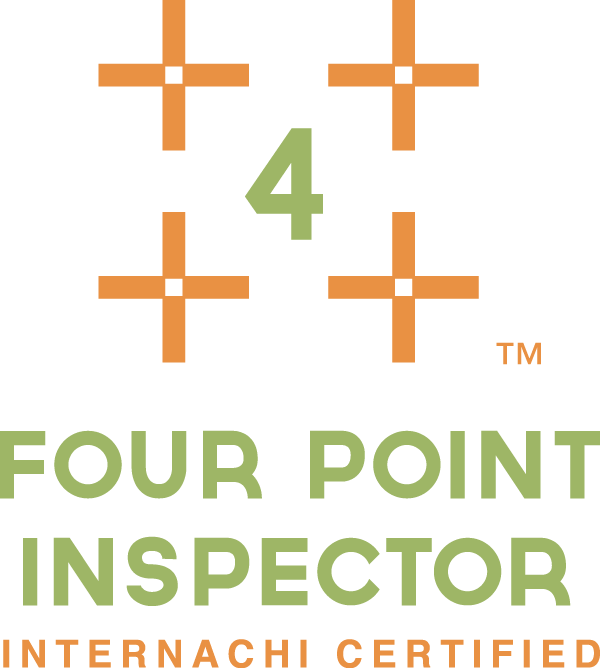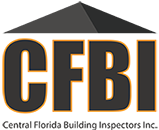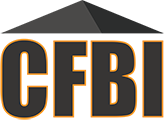Central Florida 4-Point Insurance Inspections
Discover costly builder errors before the drywall covers them up.
What is a 4-point (four-point) insurance inspection?
This 4-point insurance inspection includes a limited scope evaluation of the following four systems:
Electrical System
Roof
Plumbing System
HVAC System


How can I pass a four point insurance inspection?
Because we will be inspecting the roof, plumbing, electrical and HVAC, these all need to be in satisfactory condition.
For the roof, insurers typically want to see 5 years of life left on a roof. Also, no major damage, defects, leaks or other issues that could lead to a claim down the road.
For the plumbing system, they want to see good condition supply & waste piping. No defective products such as polybutylene, older style PEX plumbing, old galvanized piping, water leaks and/or unsafe or improperly installed equipment such as water heaters.
For the electrical system, insurers want to see safe equipment with no major brands of defective electrical panels such as Federal Pacific or Zinsco panels. Aluminum wiring is typically a no-go for insurers along with other safety/fire issues like double-tapped breakers, improper wire splices, unsafe outlets, etc.
For the HVAC system, the insurance company wants to ensure they are functional, not leaking moisture and have some life expectancy left. Leaking or backed up air handlers are a common cause of expensive water damage claims.
Notes/Comments:
- Insurance inspections should NOT be confused with or used in place of a standard home inspection which covers significantly more aspects of the home and is conducted in a completely different fashion. For more information on finding out which service is right for you, please talk to one of our inspection specialists.
- Requirements for insurance companies may exclude some of the systems of a 4-Point Inspection. Often, all that is required is the evaluation of a specific system of the house, such as the roof, electrical system, or a limited combination of systems. When calling to book the inspection please inform us if this is the case and which systems should be evaluated. The pricing may be adjusted based on this fact.

What is a 4-point inspection report?
A 4-point insurance inspection is a standardized assessment designed to evaluate the condition of a home’s major systems. It is not as extensive as a pre-purchase home inspection and is not meant to identify every potential issue within the home. Instead, it focuses on the age, materials, and overall functionality of the four key areas that most commonly lead to insurance claims.
The actual report type is dependent on your insurance company. Homeowner’s going with State Farm will need their reports filled out on a specific State Farm 4-point inspection report. Many other insurance companies accept the Citizens 4-point inspection form. We also have a standard form used for other clients. Please let us know who your insurer is and what form they would like the report on so we can get it right the first time.
Roofing
Our inspectors check the roof’s age, material, visible damage, and remaining life expectancy. A roof nearing the end of its life or showing signs of leaks may lead to insurance denial or higher premiums.
Electrical System
Our inspector assesses the electrical panel, wiring type, age, and any potential fire hazards. Outdated systems like aluminum wiring or fuse panels can be red flags for insurers.
Plumbing System
HVAC System
Heating and cooling systems are checked for age, condition, and functionality. Non-functional or improperly installed HVAC systems may result in limited coverage or required repairs.
What is the difference between a 4-point & a wind mitigation report?
The 4-point is used to gain insurance and looks at the main 4 parts of the house; roof, plumbing, electrical & HVAC. The wind mitigation report is used to help lower your insurance premiums and only looks at the roof and attic. We have not heard anyone get denied insurance based on a unfavorable wind mitigation but we have had clients get rejected for homeowner’s insurance based on a unsatisfactory 4-point report.
FAQs
What is a 4-point insurance inspection?
A 4-point inspection is a focused assessment of the four major systems in a home: roof, electrical, plumbing, and HVAC (heating and cooling). It is typically required by insurance companies for older homes.
Why do insurance companies require a 4-point inspection in Florida?
Florida insurers use 4-point inspections to evaluate the condition and age of key systems to determine risk. Older homes may present a higher risk of claims if systems are outdated or unsafe.
What homes need a 4-point inspection?
Homes that are 25 years or older (or sometimes 20+, depending on the insurer) usually require a 4-point inspection before issuing or renewing a policy.
How is a 4-point inspection different from a full home inspection?
A full home inspection is more comprehensive and usually for buyers. A 4-point inspection is limited to four systems and is specifically for insurance underwriting purposes.
What does the roof inspection include?
It includes the age, type, material, visible damage, and remaining life expectancy of the roof, as well as signs of active leaks or repairs.
What does the electrical inspection include?
Our inspectors check for panel brands, wiring type, grounding, breaker condition, and any known fire hazards like aluminum or knob-and-tube wiring.
What does the plumbing inspection include?
The inspection covers pipe materials, visible leaks, age of the system, and water heater condition. Outdated plumbing like polybutylene can be red-flagged.
What does the HVAC inspection include?
Inspectors review the age, condition, and functionality of the heating and cooling system. In Florida, functioning air conditioning is typically required.
How do I submit the inspection report to my insurer?
Once completed, your inspector will provide a standardized 4-point inspection form (commonly used across Florida) with photos, which you or your agent can submit to the insurance company.

